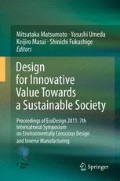Abstract
The 3R policy in Japan promoted the recycling of waste resources; however, at the same time, it also triggered a rapid increase in the export of waste plastics to China. As a result, domestic material recycling (MR) of waste plastics generated in Japan has been declining, which may lead to a hollowing out of Japan’s waste plastic recycling business. In this study, we conducted a macro analysis of the effects of the 3R policy in Japan and the economic situation of Japan and China on the flow of waste plastics by following changes in trade volume of waste plastics between the two countries from the 1990s through 2010. From the results of this analysis, it can be seen that waste plastics exports from Japan have continued to increase, driven by the legal structure related to the 3R policy in Japan and the rapid increase in the demand for plastics in China. However, the export from Japan seems to be already reaching a limit On the other hand, when viewed from China’s perspective, China has been importing waste plastics not only from Japan but also from about 120 countries around the world. Total imports in 2009 amounted to approximately 7.3 million tons, while imports from Japan (1.35 million tons) accounted for only about 20% of total waste plastics imports. The immediate cause is the rapid economic growth of China; however, various policies in China have also further increased the demand for plastics. Therefore, the demand for waste plastics in China is expected to continue increasing in the future. In addition, among waste plastics imported to China, inappropriate items included among the waste plastics have been on the rise in light of the Basel Convention, and there are concerns about the effects of environmental pollution resulting from the recycling business in China.
Access this chapter
Tax calculation will be finalised at checkout
Purchases are for personal use only
Preview
Unable to display preview. Download preview PDF.
Reference List & Footnotes
Increase in Waste Plastic Imports via Tianjin Port in January 2011(in Chinese).
National Bureau of Statistics of China (in Chinese) Refer to http://www.stats.gov.cn/tjsj/
Ziqiang SUN(2010) Academic papers : Japan's Trade Review of Waste Plastics (in Chinese).
Trade Statistics of Japan, Ministry of Finance, Government of Japan Exports Data by Commodity and Country 1997-2010 Refer to http://www.customs.go.jp/toukei/srch/index.htm (April 30, 2011)
Containers and Packaging Recycling Association: Refer to http://www.jcpra.or.jp/words/index.html
Corporate Income Tax Preferential Treatment Policy for Combined Use of Resources (2008 version) (in Chinese).
Circular Economy Promotion Law of the People's Republic of China, Article 30 (in Chinese).
11th Five-Year Plan (in Chinese).
12th Five-Year Plan (in Chinese).
Waste Management Regulations concerning import PET bottle bale 2010 (in Chinese)
The observation analysis report of China Plastic On Line "Plastics Market (2010) Vol.8 No.564, pp4-5
Basel Law of Japan: Refer to http://www.meti.go.jp/policy/recycle/main/admin_info/law/10/index.html
China's Waste Resources Import Management Symposium Report (2008).
General Administration of Quality Supervision, Inspection and Quarantine of the People's Republic of China Re to http://www.aqsiq.gov.cn/
Chairman's Summary Report of Senior Officials Meeting on the 3R Initiative held in Tokyo from March 6 to 8 in 2006.
Atsushi TERAZONO (2007): Online Magazine of the Recycling Society and Wastes Research Center of the Overseas Export International Institute, "Invisible Flow" and a Study Report on Recycling and Exports(in Japanese).
Plastic Monthly Magazine (in Chinese), September 2010, 576th period "Damage the Plastic Industry in China Receives by Cases of Precocious Babies Arising from Plasticizers" (in Chinese).
Author information
Authors and Affiliations
Corresponding author
Editor information
Editors and Affiliations
Rights and permissions
Copyright information
© 2012 Springer Science+Business Media Dordrecht
About this paper
Cite this paper
MENG, X., YOSHIDA, T. (2012). The Impact Analysis of Waste Plastic Trade between China and Japan—From Policy View. In: Matsumoto, M., Umeda, Y., Masui, K., Fukushige, S. (eds) Design for Innovative Value Towards a Sustainable Society. Springer, Dordrecht. https://doi.org/10.1007/978-94-007-3010-6_46
Download citation
DOI: https://doi.org/10.1007/978-94-007-3010-6_46
Publisher Name: Springer, Dordrecht
Online ISBN: 978-94-007-3010-6
eBook Packages: Earth and Environmental ScienceEarth and Environmental Science (R0)

